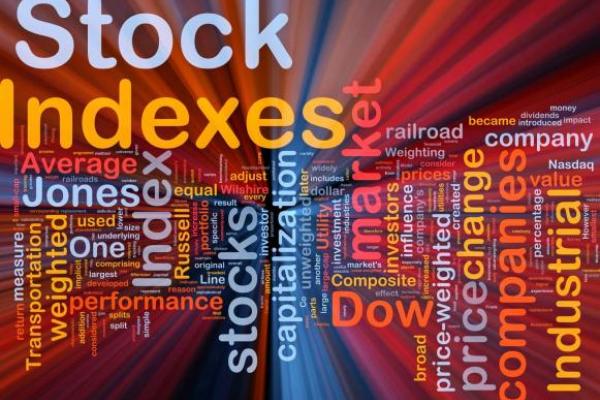

What Are The Main Stock Market Indices, and How Can Traders Use Them Effectively?
Stock Market: Definition
Let's start off by clarifying what a stock market is. A stock market is a place that contains different markets and exchanges where equities of publicly owned companies are bought, sold and issued. All financial activities in the stock market are held on formal exchanges or over-the-counter marketplaces.
Even though the stock market is a common name for the world market, every country has its own markets with stock exchanges, stocks and indices. If you want to trade equities, there are several options. You can invest in a real company's stock, trade stock CFDs or trade stock indices.
What Is a Stock Index?
A company's stock, also known as an equity, is made up of parts called shares. Essentially, a stock is a security that is sold by the company's owner to attract investments. The equity gives the investor the right to ownership in the company in proportion to the number of shares they own. When a company 'goes public', it sells its shares in the market.
When we talk about a stock index, it's made up of not one company but many. In that sense, an index is a benchmark that includes equities of companies traded on a particular stock exchange.
The companies included in an index can change if they don't meet the index's requirements.
An index can't include all the companies listed on an exchange. Every index has requirements that companies must meet and usually consists of those with the largest market capitalisation. Therefore, if a company suffers losses or, worse, goes bankrupt, it'll be removed from the index and replaced by another one.
Stock Market Index: Basics
All indices can be grouped by a certain sector they represent. Some can reflect an entire country's economic health. For example, the DAX 30 is used as a representation of the German market. The TA-35 represents the Israeli market. An index can also refer to a specific industry, such as the Nasdaq Composite Index, or just refer to a group of top stocks, e.g., the S&P 500.
A stock market index is used as a gauge of the whole market's sentiment.
In general, an index represents the health of a country or the industry it relates to. Because an index consists of different stocks, if their prices go down, the value of the index as a whole drops. If the price rises, the index's value also increases. However, not all stocks rise or fall at the same time. Given that many shares represent an index, only significant price changes can make it move, and only essential events in the market force it to budge significantly.
Complicated Calculations
Indices are calculated in different ways, but most of them reflect the average of the current value of the stocks included in it. Usually, companies with larger market capitalisations have a more significant impact on the index's value.
There are two methods of calculating an index's: direct and indirect approaches:
- The direct approach is more straightforward. To calculate the value of an index value, you need to add the prices of all stocks included in it. In this method, all stocks are weighted equally, so no company has a more significant impact on the index value than any other.
- The second method is indirect calculation. Add the values of all the stocks in the index, divide the sum by the number of stocks and multiply the result by the average trading volume for each stock. After that, add the results to get the index's volume-weighted average price. With this method, stocks are not estimated in equal proportions, so some will affect the index's overall value more than others.
You can find the particular calculation method used on the exchange's website. However, if the index isn't as famous as the S&P 500 or the Nasdaq Composite, there's a chance you won't find how its value is calculated.
Why Stock Indices Matter
Stock indices aren't as widely used among traders as currencies or commodities. Nevertheless, they're crucial for evaluating global market sentiment. If you read stock market news, you'll see that every financial news agency mentions stock indices at least several times per day to reflect current market events.
We can say that indices are helpful instruments when it comes to determining the economic health of the country or the particular industry it relates to.
The Leading Stock Indices
Every country has its own index benchmarks, but some are known around the world. They determine the global economy's health and are followed by investors and traders from all over.
The Dow Jones Industrial Average or DJIA
This is an index of 30 North American stocks traded on the Nasdaq and New York Stock Exchange. Historically, it determines the health of the US economy. Only companies with strong growth and notable investment capacity are part of the index. Companies can be replaced based on non-quantitative criteria.
The DJIA is the second-oldest index that historically reflects the health of the US economy.
More expensive stocks have a higher impact on the index's value. To calculate its worth, you need to determine the sum of the stock prices and divide the sum by the number of stocks in the index. The DJIA doesn't cover transportation and utilities, which are instead included in the Dow Jones Transportation Average (DJTA) and Dow Jones Utilities Average (DJUA).
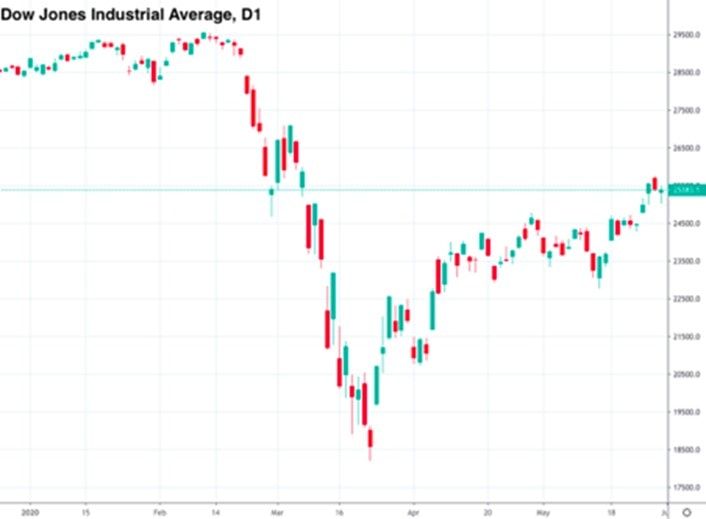
S&P 500 or Standard & Poor's 500 Index
This index represents the 500 largest publicly traded US companies. It's a float-weighted index, so the company's market capitalisation is gauged by the number of shares placed for public trading. The index primarily consists of technology companies and financial firms, the list of which is reviewed quarterly. That means that some companies can be replaced if they don't match the index's requirements anymore.
The S&P 500 includes only companies that are available for public trading.
If you check the list of included companies, you may find that there are more than 500 stocks. This may happen because some companies have several equity classes.
The index's calculation is done using the weighted method. Essentially, that means that the companies with the largest market capitalisation have a greater impact on the index's overall value. So, to calculate the index, you need to divide a company's market capitalisation by the total of all companies' market capitalisations in the index.
There are other variations of the index, such as the S&P MidCap 400, which reflects companies with middle-sized market capitalisations, and the S&P SmallCap 600, which consists of companies with smaller market capitalisations.
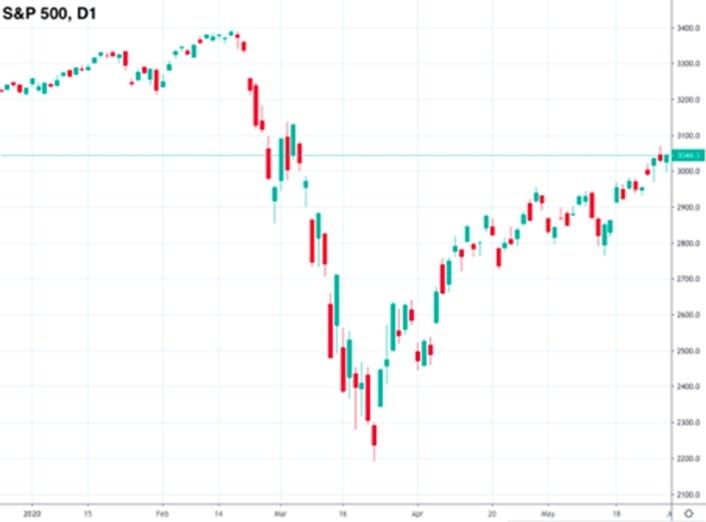
The Nasdaq Composite Index
This index represents stocks from more than 3,300 companies listed on the Nasdaq Stock Exchange. It includes companies with headquarters in the US and beyond. However, to become part of the index, a firm should be exclusively listed only on the Nasdaq exchange. There is one exception: if the company was registered on another US market before 1 January 2004 and continues to be dually listed.
The Nasdaq Composite Index is used by investors to evaluate the sentiment of the tech industry and risky equities.
It's a weighted index that takes into consideration market capitalisation. It mostly consists of tech companies, although other industries are represented on the list, too. Unlike the S&P 500, the Nasdaq Composite Index includes large, small and even speculative companies. This is why investors use this index to evaluate both the health of the tech industry and sentiment about risky equities.
To calculate the index's value, multiply the total value of equities by the last price of each stock. The result is divided by a unique index divisor. The final value of the index is available daily at 4:16 PM US Eastern Standard Time.
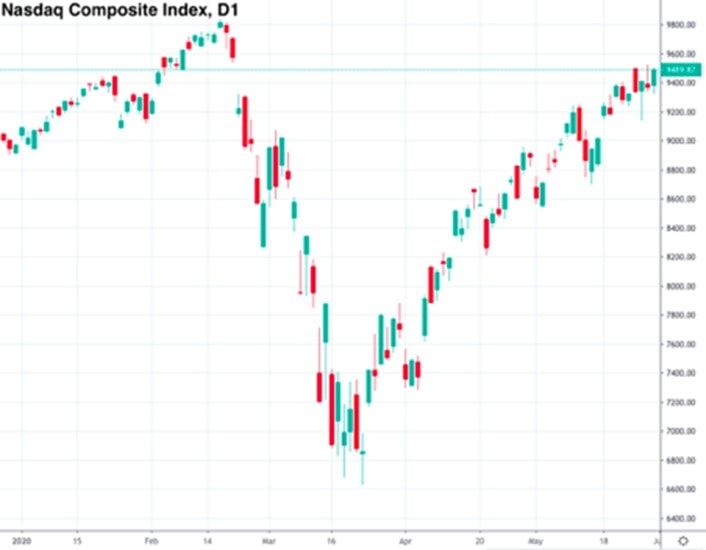
FTSE 100 Index
The FTSE 100 Index, FTSE 100, Financial Times Stock Exchange 100 Index, or simply the 'Footsie' represents the 100 companies with the largest market capitalisation on the London Stock Exchange. Although FTSE 100 includes foreign companies, it's used as a gauge of the UK economy's health. The strength of the British pound highly affects the index.
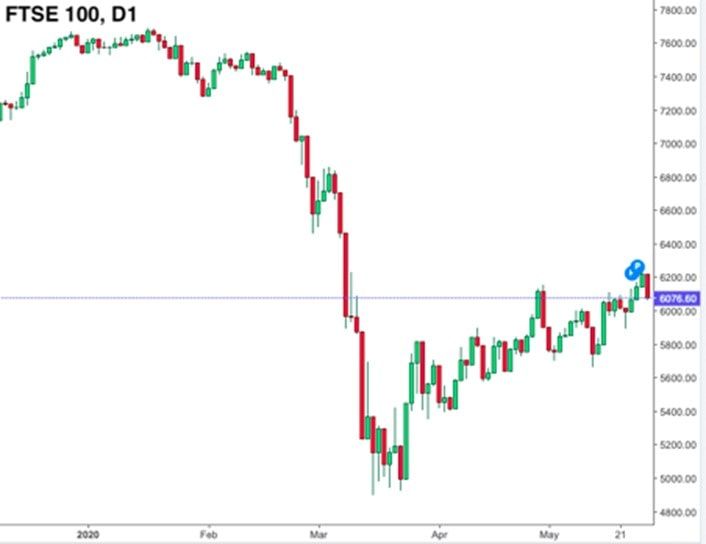
DAX 30
DAX 30, or Deutscher Aktienindex, is a German index made up of the 30 largest German companies listed on the Frankfurt Stock Exchange. It's calculated using Xetra, an electronic system that submits the prices for the index's calculation. The index is a benchmark for the German economy as well as the whole European market.
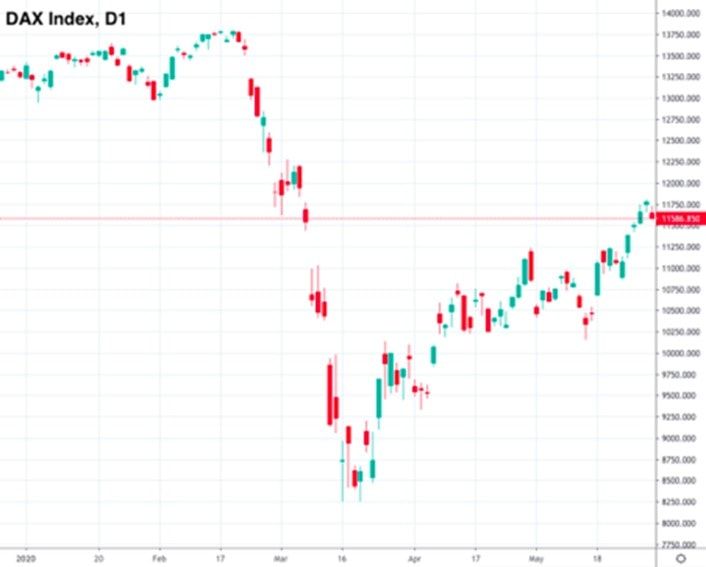
Trading a Stock Index: Benefits and Drawbacks
If you've decided to trade stock market indices, you should know about all of the pros and cons.
|
Benefits |
Drawbacks |
|
No doubt. When trading stocks, you're at a crossroads about which company to choose. When trading an index, you don't need to choose a single company; the index is composed of the stocks of the largest and most widely traded companies. |
Difficult to follow. Because an index consists of many stocks, and the list is always changing, it's not easy to predict how the market will move given the different companies included in the index. |
|
Hedge. An index can be used as a hedging tool. Stocks are risky assets in themselves, but because an index consists of many stocks, the price fluctuations are smoothed out. |
Lower liquidity. Indices aren't widely traded, and the liquidity of some can be inferior, especially if we're talking about lesser-known ones. |
|
Stability. The stock market is highly volatile. Nevertheless, indices are a less risky instrument that can be used for trading and investing. |
Limited opportunities. This disadvantage relates to the whole stock market. For forex trading, you can trade for 24 hours, 5 days out of the week. The trading hours for the stock market, however, are limited to local business hours. |
|
Market outlook. If you follow indices, you always know about market sentiment. When it comes to choosing indices, you fully understand the current situation of a specific country or industry. For example, if you select the Nasdaq Composite Index, you're aware of the situation in the tech industry. If you choose the DAX, you're familiar with the conditions of the German market. |
Trade Indices or Invest in Stocks?
Before we compare index trading and stock investing, it's crucial to understand that you can't just buy an index itself. If you want to use an index as one of the securities in your portfolio, you can trade on its price fluctuations.
It's impossible to buy an index.
If you decide to invest in stocks, you'll encounter plenty of difficulties. Firstly, you'll need to choose a company that you think will outperform others in the future in order to make a profit on your investment. Secondly, when you invest in real stocks, there's a high risk of high market volatility. Thirdly, to buy a company's stock, you'll need significant funds because its shares don't come cheap. Also, if you're considering stock investing as a long-term prospect, buying one company's shares won't be sufficient.
At the same time, trading indices is much easier and offers several options to trade on the stock market index:
- You can buy an index fund. To do so, you'll need to pay management fees. However, there is a vast range of fund companies to choose from.
- You can trade ETFs. They're traded on an exchange and represent a pool of stocks.
- You can also trade CFDs.
Stock Index CFDs
CFD stands for contract for difference, and it's the easiest way to trade stock indices. You won't actually own real shares, but you'll have the option to trade on an index's price fluctuations. To trade stock index CFDs, you'll need to find a reliable broker. After you deposit money, you can buy and sell the stock indices available on the broker's website. Libertex, for example, offers 19 indices from different continents.
CFDs are the easiest way to trade a stock index.
If you know how to trade currencies, you won't have difficulties trading CFDs. Additionally, CFD trading means you have a leverage option. So, to start trading, you may not need more than $20. But be careful: leverage raises your potential profits and your potential losses. The significant advantage is that you can both buy and sell indices on any timeframe and anytime you want.
How to Predict an Index's Direction
As for any other asset, you need to know how to predict the market direction:
- Check the list. It's important to know what companies have the most significant weight on the index. So, you can check the news regarding those companies and predict the value of the entire index.
- Learn the components. Because an index is made up of many stocks, you need to know which industry they relate to. You don't need to know all the companies on the list, just their industry. After that, you'll need to follow industry news and events to predict which way the stocks will move.
- Follow global news. All the leading indices are correlated with global market sentiment. For example, if there are trade wars, pandemics or risks of an economic recession, the largest indices will depreciate as a reflection of overall market sentiment.
- Currency-index correlation. Many indices experience a strong correlation with domestic currencies. For example, if the USD rises in value, it's more likely the S&P 500 will increase, too.
- Commodity-index correlation. If a country is heavily dependent on a commodity's exports or imports, the commodity's price may affect the country's indices.
Trading Stock Indices: A Complete Guide
As we said above, CFD trading is the best option when trading stock indices. So, let's consider how to trade stock index CFDs step-by-step:
- Find a trustworthy broker. A broker should provide CFD trading and offer several indices to choose from.
- Open an account. To start trading CFDs, you need to open an account. There are demo accounts and real accounts. If you think you're not skilled enough to start trading indices in a real account, you can open a demo version. A Libertex demo account allows you to trade index CFDs for free while it duplicates real market conditions and provides all the indicators you need.
- Choose an index. Previously, we mentioned the most famous indices. We recommend choosing them as they have more considerable liquidity, and it's more likely you'll find them on your broker's website.
- Open a chart. An index chart doesn't differ from currency, commodity or stock charts. The chart displays historical and current price movements. As we've mentioned, you can both buy and sell an index CFD. And don't forget about the timeframe. If you're interested in fast rewards, choose smaller timeframes. If you want to trade for longer, choose a larger one (from ).
- Predict the direction. Above, you can find the factors that affect an index's direction. Additionally, you can use technical indicators. They don't differ from those used in the forex market. We recommend using the Awesome Oscillator, MACD, Momentum and Volumes.
- Open a position. The last step is to open a position. Just click buy or sell, and you're in the market. Remember about limit orders, which allow you to open a position at the price you want.
Applying Strategies
Here are some tips on using strategies in your trading activity.
Intraday Trading
This is a simple strategy that will suit those who want to receive rewards fast and are ready to spend lots of time in front of the computer. The idea is clear: you open and close positions within one day. The goal is to catch significant market movements, such as a considerable fluctuation on big economic releases and news.
Therefore, to use this strategy, you should be equipped with lots of news publications, an economic calendar and time to spend trading and monitoring the news. For this strategy, it's recommended to trade on timeframes smaller than H1 to catch more significant price performance.
Trade On News
This strategy relates to the previous one. All you need to do is to determine which companies have the most significant weight on the index value. The most important event for any company is its quarterly earnings release.
Traders use analysts' predictions and actual data to trade on their difference. If the actual data beats expectations, the stock's price is likely to rise, meaning the value of the index as a whole will increase. If the actual data are worse than expected, stock prices are likely to drop, and the index with them.
Breakout Trading
If you know how to place support and resistance levels correctly, you can use this strategy. You buy when the index price breaks above the resistance with significant volumes. You sell when the price breaks below the support level.
Conclusion
To sum up, a stock market index is your perfect opportunity if you want to enter the stock market but fear high volatility. An index smooths stock prices' fluctuations because it consists of many stocks. In general, an index reflects the health of the industry or economy to which it relates. The best way to trade a stock index is to use CFDs. But please note that trading CFDs with leverage can be risky and can lead to losing all of your invested capital.
If you have doubts about what index to trade or how index trading is done, use a Libertex demo account. It lets you try index trading for free and test your own trading strategy to improve it.
If you still have questions, here are the answers.
FAQ
What Is a Stock Index Example?
There are some well-known examples of stock indices: the S&P 500, Nasdaq Composite Index and Dow Jones Industrial Average.
How Is a Stock Index Calculated?
Every index has its own formula. However, most indices are calculated using a weighted average, meaning you take the price of an equity, multiply it by the number of stocks and divide the result by all stocks' market capitalisation.
What Are the Best Indices to Trade?
It's always better to trade leading indices because they provide more substantial liquidity. The most famous are the S&P 500, DJIA, DAX and Nasdaq.
How Do I Trade Indices Like a Pro?
It's easy to trade indices if you're familiar with forex or commodity trading. Check which stocks are included in the index, follow news about the country or industry the index relates to. Use technical indicators such as Volumes, Momentum and MACD. And practice a lot. Use a demo account to improve your skills.
Disclaimer: The information in this article is not intended to be and does not constitute investment advice or any other form of advice or recommendation of any sort offered or endorsed by Libertex. Past performance does not guarantee future results.
Why trade with Libertex?
- Get access to a free demo account free of charge.
- Enjoy technical support from an operator 5 days a week, from 9 a.m. to 9 p.m. (Central European Standard Time).
- Use a multiplier of up to 1:30 (for retail clients).
- Operate on a platform for any device: Libertex and MetaTrader.